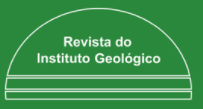Long-term trends and probability distribution functions of air pollutant concentrations in the megacity of São Paulo
DOI:
https://doi.org/10.69469/derb.v45.816Keywords:
Air quality, Particulate matter, Tropospheric ozone, São Paulo, Lognormal probability distribution, Gamma probability distributionAbstract
Air quality conditions in many urban areas have improved in the last decades as a consequence of air pollution control policies and regulations. Mitigation strategies have been successful in reducing the concentration of primary pollutants like inhalable particulate matter (PM10), but the control of secondary pollutants like tropospheric ozone (O3) is still challenging in megacities like the Metropolitan Area of São Paulo (MASP) in Brazil. To support the development of effective mitigation strategies, it is crucial to characterize the statistical behavior of air pollutant concentrations and its long-term evolution. Probability Density Functions (PDF) can be useful to model site-specific air quality conditions, providing estimates for the frequency of extreme pollution events and exceedance of air quality standards. The current study aims to characterize which PDF model better fits and characterizes the variability of PM10 and O3 concentrations in the MASP. For that, daily maximum moving average concentrations were analyzed between 2000 and 2023, characterizing the long-term trends and the frequency of exceedance of air quality standards. PM10 concentrations followed a lognormal PDF, with an expected value of 31 ± 15 µg.m-3. O3 followed a Gamma PDF, with an expected value of 68 ± 25 µg.m-3. A consistent long-term decrease was observed for PM10 (-1.04 ± 0.09 µg.m-3.yr-1), while O3 showed an increasing trend of 0.51 ± 0.04 µg.m-3.yr-1 in the summer. In recent years (2021-2023), the probability of exceedance of the World Health Organization guideline was 17.4 and 11.0%, respectively, for PM10 and O3. In 2020, a statistically significant increase in O3 expected values was observed, possibly associated with changes in the emission patterns of precursors due to the mobility restrictions imposed by the COVID-19 pandemic.
Downloads
Downloads
Published
How to Cite
Issue
Section
License
Copyright (c) 2024 Matheus Soares Dário, Denise Gomes Novais, Theotônio Pauliquevis, Luciana Varanda Rizzo

This work is licensed under a Creative Commons Attribution 4.0 International License.
Política de Acesso Livre:
A revista Derbyana oferece acesso livre ao seu conteúdo. Toda a coleção da Revista é disponibilizada de forma gratuita em https://revistaig.emnuvens.com.br/derbyana e no Portal de Periódicos Eletrônicos em Geociências – PPeGeo (http://ppegeo.igc.usp.br), resultado de parceria entre a Sociedade Brasileira de Geologia e o Serviço de Biblioteca e Documentação do Instituto de Geociências da Universidade de São Paulo.




















